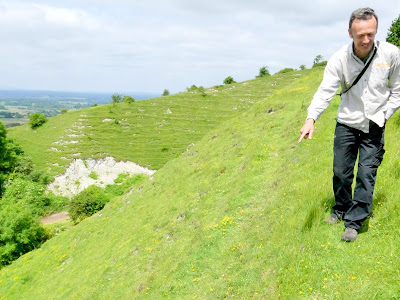Where the path starts and where the cattle churn up the soil and flatten plants, Graham showed us the rarest plant on the Downs.
It is Centaurea calcitrapa known as the Red Star-thistle. A biennial herb of waste ground and tracksides in dry grassland, and on banks on well-drained sandy, gravelly or light chalky soils. Lowland. ref: http://www.brc.ac.uk/plantatlas/index.php?q=node/1522
It is an archaeophyte: a plant species which is non-native to a geographical region, but which was an introduced species in "ancient" times from the Mediterranean, rather than being a modern introduction. It doesn't appear in my books. The Romans or King Alfred (he traveled to Rome) may have inadvertently brought it here.
Graham pointed out the diversity of plants where the ground had not been ploughed or fertilized.
Click on any picture to expand it.
It was the orchids that stole the show -- Fragrant, Common Spotted, Pyramidal and Twayblades.
Keep an eye on http://www.nationaltrust.org.uk/saddlescombe-farm-and-newtimber-hill for future National Trust events. Alternatively, clubs and societies interested to see the Pride of Sussex, the County Flower of Sussex on a lead walk by me could take a look at http://www.peterlovettwalks.eu/
In any case, enjoy our beautiful Sussex countryside this summer.









No comments:
Post a Comment